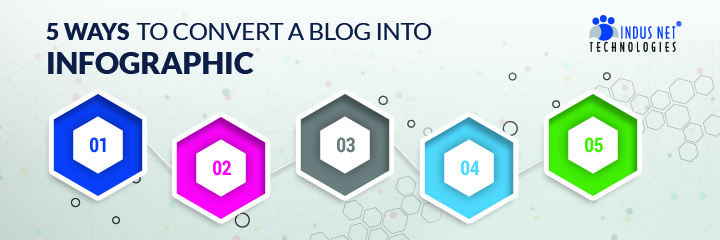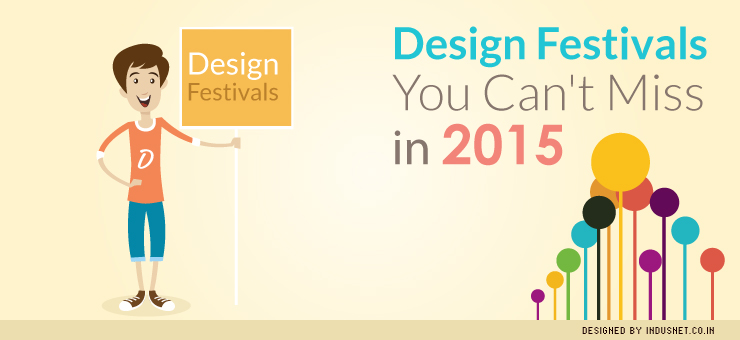
5 Ways To Convert Your Blog Into Infographics
Human beings are biologically wired to pay more attention to visuals. Did you know ½ of our brain is dedicated to our visual function? Also, 93% of all human communication is visual. Well, are you thinking this is a blog on human brains? Wait, here’s the clarification. Visual content has taken up a huge chunk of digital marketing space so much so that Facebook posts with images see 2.3X more engagement than those without images. And now, infographics, which in simple terms mean visual representation of data, has emerged as one of the most sought after content marketing tools to engage the audience in business. According to Content Marketing Institute, infographics were the B2B content marketing tactic with the biggest increase in use, from 2015 to 2016, up from 50% to 58%. Since 65% of the entire population are visual learners, infographics which represent complex data and statistics in visually enticing format, are gaining popularity. Also, with every passing day, our attention spans are becoming shorter. This is where infographics are scoring big time. Since infographics have to-the-point text accompanied by colourful images, statistics, graphs, they are being increasingly shared on the social media platforms than text. In short: infographics are easy to scan and you can grab the information at a glance. Web usability consultant Jakob Nielsen mentioned that the average user reads at most 20 % to 28 % of words during an average visit. Now, you can also turn your text (read blog, article) into an infographic if you follow a few simple steps. This way you can recycle and repurpose the old content and give it a new lease of life. Here are five ways how you can convert your blog into an infographic. Identify the most important information in the content You content comprises 2,000 words but you can’t replicate the exact number of words in the infographic. That won’t serve the purpose of infographics also. The foremost thing that should be kept in mind when turning content into an infographic is to cull out the most important information or points from the article. Infographics should not be text heavy. It should be concise. In simple words: you should be able to prove your point through well-organised graphical representations. The best way would be to ask a few simple questions to yourself when digging out key information from the article. Here are a few sample questions: What is the main purpose of the article? What are the major takeaways from the article? Does the infographic contain updated and authentic facts? It’s highly necessary to remember that people like going through infographic these days because it gives the most relevant information in an easy, graphical format so that it makes the maximum impact. Here’s the link to our infographic on the 5 tech gifts for your mom on Mother’s Day https://www.indusnet.co.in/5-tech-gifts-mom-mothers-day/ Decide on the template which would best represent the data Now that you have the content with you, you need to decide how you are going to represent the data in the form of graphics. However, here’s a thought. Before you choose the type of infographic which goes best with your content, it’s important to understand the target audience and the objective. Also, before deciding on the template you also need to organize the information in a way you want to represent your content in the infographic. So, if you are developing a content which shows the expansion and journey of your company over the years, you can use the timeline infographic. You can also create geographical infographic wherein your data will be integrated with maps. Here are some of the types of infographics you can design to make your content alluring to your customers: Flow chart Timeline Comparison Photo infographic Versus infographic Hierarchical infographics Statistical Infographics Interactive Infographics Useful Bait List infographic Geographic infographics Design the infographic using clean fonts Today, virtual bookmarking site Pinterest is home to thousands of infographics. A designer needs to make an infographic tempting enough to make it stand out in the crowd. A designer can always take help of the online tools to create infographics also. These tools will spark creative inspiration in the designer and we can come up with captivating images. Also, using of minimum text, clean fonts and applying colour palettes that represent your company, can add value to the infographic. Here’s top 8 online tools what would help you to create innovative and engaging infographics. Canva Infographic Maker Visme.co Creately Infogr.am Easel.ly Piktochart InfoActive Venngage Add the link to your blog on the infographic You are converting your blog article into an infographic so that a reader can easily browse through the important points in your content. So, don’t forget to include the link to your original content at the bottom or beginning of the infographic. In this way you can receive unique traffic to your website. Also, it’s always advisable to include the links to the source from where the information is taken. Include the embed code under the infographic Reportedly, infographics are liked and shared on social media 3X more than other any other type of content. Infographics are easy to read and can transform complicated data into colourful graphical representations. Now, if you want your infographic to be shared, then it’s important to embed code under the infographic. Once you embed the code, your infographic can be easily downloaded and shared on the social media platforms. Remember, if your infographic is properly designed with accurate information, there will be more shares and likes. This will help in improving the SEO of your company’s website. Conclusion As mentioned above, today 83% of learning is done visually and this is where infographics are coming into play in the content marketing strategy. Did you know that the search volume for infographics on Google between 2011 and 2013 has increased over 800%? Today, infographics are incredibly popular, thanks to Pinterest. And at the pace it is marching ahead, in the







